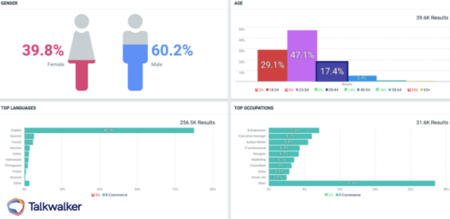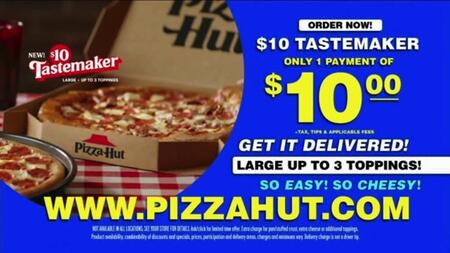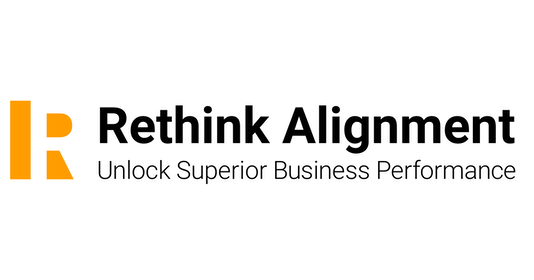The business of monitoring, measuring and understanding social media
Find the Right Tone for Nostalgia Marketing Using Owned Data
This is a guest post contributed by Talkwalker.
Nostalgia marketing is everywhere lately, and in the latest Talkwalker Social Media Trends Report we estimate it’s going to stick around for 2021, too. Nostalgia marketing is seventh on our list of next year’s top ten social media trends. And believe it or not, it’s more than just nostalgia for 2019.
Nostalgia is an evocative emotion. With it comes a flood of happy memories of simpler times, times with less responsibility or less stress. While it may seem simple for marketers to play on these good times, the best campaigns tap into a deeper, shared sense of a time that was. They bring consumers back to a time without free two day shipping, a time of yearning, when products and experiences were not so on-demand.
The year is 1997. Your Tamagotchi is thriving. You just set a new personal best with your Bop It. Your mom packed Dunkaroos in your lunch. Everyone at school wants to be your friend. Life is good.
— Time Capsule Bag (@timecapsulebag) November 3, 2020
The year is 2020. You just found out Dunkaroos are coming back. Life is good.
Brands might find success by picking an era and running with it, but if the brand just embarks on this retro trip without understanding what resonates with their audience they run the risk that audiences may not find it so groovy afterall. It can just feel out of place.
Owned data can hold the key to unlocking your audiences’ shared memories
Fortunately, brands have a secret weapon they can use to identify the audience they want to activate, and that’s their owned data. Think of the reams of customer service data that most brands have, from chats or emails, phone calls and surveys, and so much more. Though they’re likely just sitting on it, they can mine it for insights on what makes their audience tick, and what they’re fond of.
First of course, they’ll need to use an AI transcription service to make all those conversations play nice as text.
Then however, all of that data can be cross-referenced against the brand’s social media data to find not just the perfect era for a brand to land in, but the topic and tone of the message as well.
While the native analytics built into social media platforms provide some level of demographic insight, and your own internal data probably provides another, using a social media analytics tool can help you identify demographic data across the scope of the web, without reducing the metric to a single platform.
Layering your owned demographic data about who’s a customer and who’s a reluctant prospect on top of this is a smart way for a brand to get a deeper sense of the demographics of their sales funnel.
Demographic data around e-commerce can be enriched by your own customer data.
Taking this exercise a step further, by searching the owned data for key terms that may be relevant to your audience’s personal sense of nostalgia a brand can identify the era, the tone, and the topic that will most effectively resonate with consumers.
The insights a brand can uncover by comparing social media mentions to instances in their surveys, chats, and phone calls for example of terms like “I remember when” “companies used to” or “Back when” can lead a brand to identify so much more than just a simple age bracket. These types of insights will allow the analyst to discover what their customers value now, what their expectations are for your company, and how those expectations may have shifted over time.
It allows a brand analyst to push the brand to a new depth of connection with its audience. Tapping into these shared experiences can be done in a way that doesn’t feel forced or corny. It’s tough for a brand to adhere to their own guidelines and share in a joke from the past unless they have really listened with the goal of understanding their audiences’ perspective.
This process will look different for every brand. And for some brands, the era they should harken back to is obvious. Some brands may say “we were founded in the 1980s, so we’ll go for a retro 80s vibe because that’s logical.” That may not work if the brand has an older or younger audience, they need a Goldilocks audience.
In general, and this is very general, a brand should try to target the era when their ideal audience now was between the ages of ten and twenty-five. Why those years? Those are the nostalgia years. People are just cognizant enough of their past lives to know that in those years they had fewer responsibilities, they probably had more friends, more fun, they certainly had more toys and so on.
You too can do your arithmetic and find that sweet spot decade when your audience was young. But how can you settle on a topic that will work?
Lambast or laud? The topic matters
When was the last time you saw that famous blue screen ubiquitous to all infomercials? I certainly don’t miss them!
Actually, this spot made me realize that maybe I do miss them.
Maybe I do yearn for the simpler days when the blue screen meant I was in for a hard sell, not a sponsored content or influencer push. The blue screen of infomercials meant I was free to lambast whatever product Billy Mays was hawking this time. I could add up the “easy payments” and ask myself “Who would ever pay that?!” or perhaps more commonly “Who would honestly need this, I have 3 different products that do the same thing”. Pizza Hut taps into our shared memories with that spot, and uses it to pitch something I would actually buy, especially for one easy payment.
Again there’s no hard or fast rules here, but do your research! Some things that people are ostensibly fond of about the past, are perhaps not viewed so highly when viewed from the brand voice. Running around the streets as a kid til mom called you in for dinner for example, might be a favorite childhood memory. But a brand promoting that kind of hands-off parenting (even if it’s clear it’s the past) may not fly so well today.
Conversely, some things we all were happy to leave behind for the dustbin of history, may (and I do mean may!) have aged better with distance and time than your perception of it would allow. Assessing the sentiment of a given topic on social media can help point your brand in the right direction, and more crucially, can help your brand avoid disaster.
Take for example, a brand that wants to recall the 1990s. They hope to do a campaign that plays on some common tropes everyone recalls about the Nineties. They could do something about the pop bands, boy bands, girl bands, everyone loved those bands. They could poke fun at the grunge scene, remember how raw and emotive that all felt? Something else we all remember about the Nineties was the dial-up sound. Anything there?
Over the previous six months, grunge has been the most discussed of these topics, with 577K mentions. Followed by the Spice Girls with 350K mentions. As almost an afterthought, the dial up internet sound has only been mentioned 5.7K times, one one hundredth of the mentions of the grunge scene.
So the US presidential debate was the human version of the dial up internet sound.
— PopLuxe (@OfficialNadi) September 30, 2020
But, it’s mentioned more positively, more often, than the other two terms. It has the highest positive sentiment of these three topics at 40.5%, followed by the Spice Girls with only 31% positive mentions.
That’s pretty impressive, considering we’re talking about a 25 year old sound everyone hated.
And actually, a brand realized this and hit all those early internet users right in the feels with this tweet:
Heart this tweet if you remember the notorious "dial-up" internet sound...�� #TBT pic.twitter.com/xzhBToRAF8
— Lenovo Canada (@LenovoCanada) October 22, 2020
The point being that sometimes even the unlikeliest of nostalgic moments will trigger those memories and reactions. Only a brand that’s listening to their audience will be able to find the nuance in something like a jarring, hated sound, and spin it into a well-received tweet.
Discover the new project
How does third-party data get from the source to the end user? Follow the exploration at the Data Market Study, also sharing discoveries and insights in a newsletter.
Sponsors





